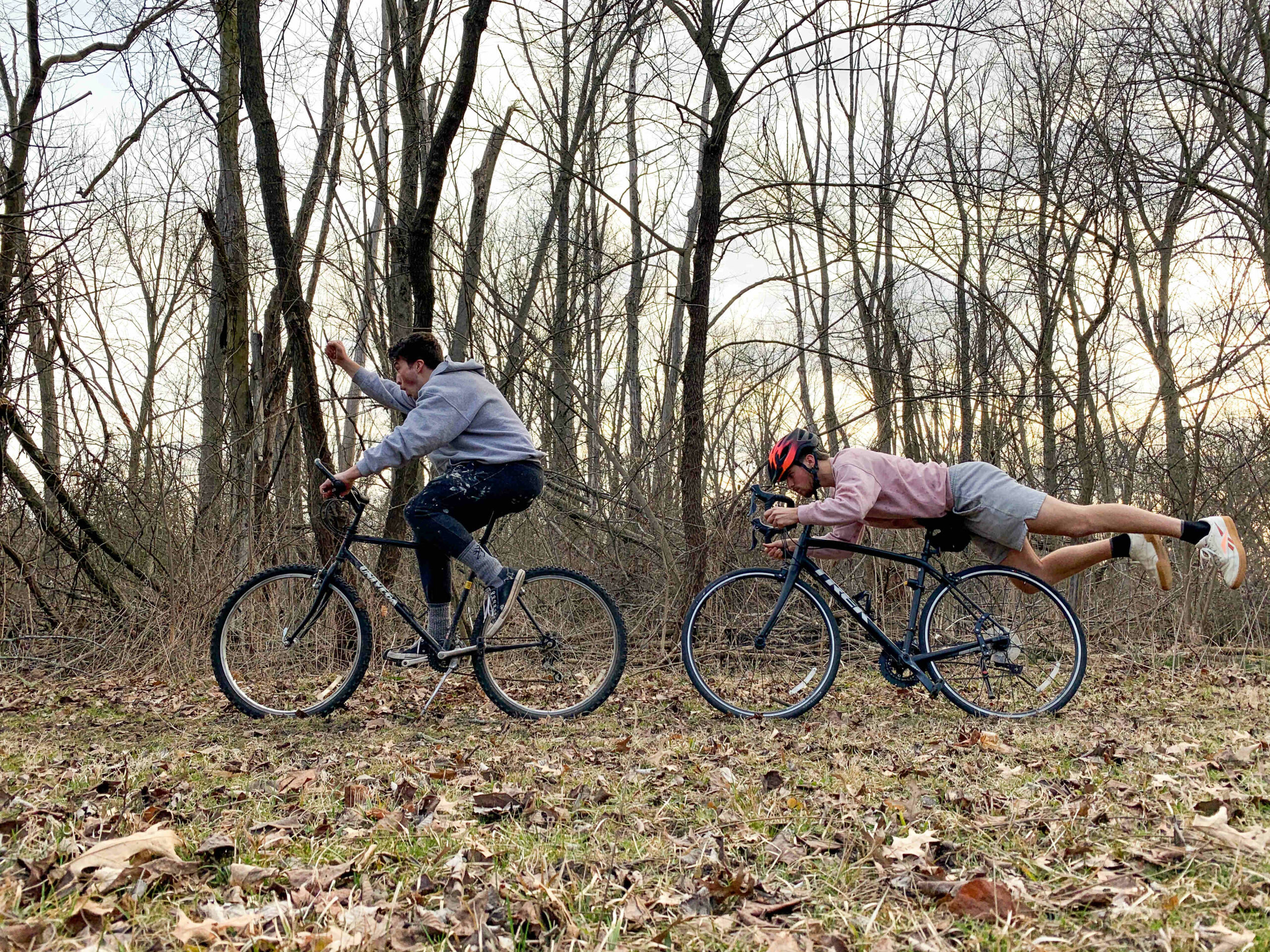It was breezy Friday afternoon — the kind of March day that begs you to throw on a sweatshirt and head outside. As soon as work let out, Evan Krabill and Paul Drescher grabbed their bikes and set out for a ride. They peddled past ducks and geese on the Millrace before veering off the limestone path into the Larry Beachy Classified Forest.
“I had found a sweet drop-off that I wanted to show Paul near the Reith Interpretive Center,” Krabill said.The two Goshen College seniors ended up finding more than just the jump; they discovered a new mountain bike loop recently added to the trail system.
Since the beginning of the pandemic, Goshen residents have been spending more time in the city’s wild spaces as a safe way to get exercise and spend free time. The Beachy forest, a 34.5-acre tract of woods located between the Millrace and the Elkhart River just south of Plymouth Avenue, is a popular choice.
Aaron Kingsley, Goshen’s city forester who has worked in the Beachy forest for 15 years, said, “It seems like there are periods of time for one reason or another where there is more use and then less use [of the woods]. It is quite clear that the pandemic has been one of those moments where there is renewed interest in being out on those trails and in the woods.”
Eric Good Kaufmann is a resident of Goshen who lives within walking distance of the woods and enjoys hiking, biking and walking his dog on the dirt trails. Recently, he has noticed a growing interest in mountain biking.
“It’s kind of seeing a surge,” he said.
Jim Wellington, whose family home sits within the classified forest, noticed the surge as well, and jumped on the opportunity to expand the city’s mountain bike infrastructure. On Dec. 19, Wellington organized a group of volunteers to build a new 2-mile loop on the west side of the Elkhart River, right across from his home.
The Goshen Mountain Bike Trail, which snakes through the woodland and prairie on Goshen Middle School property, isn’t actually new. It was originally built in 2003 by Wellington and others, but had fallen into disrepair. The trail is now back in usable condition, and Wellington hopes it will draw bikers from Goshen and the surrounding area.
Volunteers have been busy on the other side of the river, as well.
“If a tree has gone down, it used to be just one or two individuals that go out there,” said Good Kaufmann, who has helped to maintain the trails for the last five or so years. “Now it could be any number of, like, five people out there who just take their chainsaw and cut the tree out of the trail.”
The forest is owned by the Goshen Parks Department, but most of the trail work is done voluntarily by community members. While there have been some organized volunteer efforts, like the construction of a new bridge by members of the Goshen Rotary Club, much of the maintenance work is low-profile.
“I don’t think anybody really wants to be seen hiking around with their chainsaw in the woods,” Good Kaufmann said. “But, you know, it’s kind of necessary to get the stuff out of the way.”
The Beachy Classified Forest hasn’t always been a wild area. Larry Beachy, who sold the property to the Parks Department in 2003, turned the area from pasture and orchard land into a wildlife refuge.
Beachy, now 86, bought the property in 1960 and enrolled it in the Indiana Department of Natural Resources Classified Forest program. With the help of his sons, he planted red oak, tulip poplar and cypress starters. Between the hardwood trees, they planted white pines which were meant to grow fast and then die off, leaving the other trees to dominate the new forest once they matured.
Larry Beachy, who built the house now owned by Jim and Karen Wellington, described the changes that took place as soon as the trees started to grow in an interview with Kingsley in 2019.
“There were always things that we never saw before,” Beachy said. “River otters came down there, a beaver came down there, and the more dense it became the more the animals, the wildlife [came back].”
In recent years, Good Kaufmann has spotted foxes, opossums, deer, wild turkeys, quail, bald eagles and multiple types of owls in the woods.
Could the presence of more people in the woods this year have an impact on the wildlife? Kingsley said yes.
But, he said, “it’s not a goal of mine or the city’s to manage [the Beachy Forest] as though it’s a pristine wilderness. For one thing, it’s not practical and for another thing, that’s just not what it is. It has been disturbed for decades and centuries and continues to be disturbed.”
“I think it’s important for the humans who live here to see ourselves as part of the environment,” Kingsley said. “That means being in those woods and learning how to be in those woods, even recognizing the destructive capacity that we have.”




